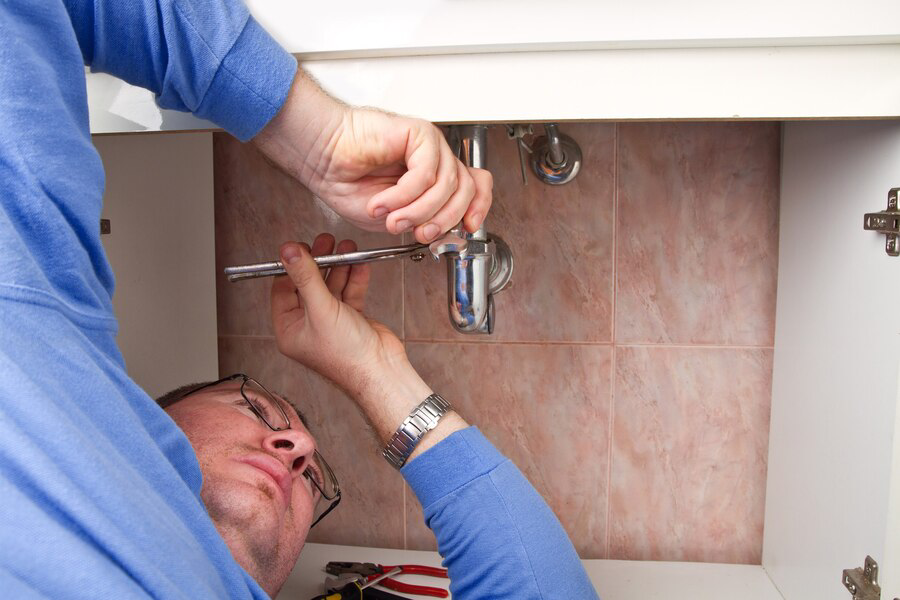Dealing with plumbing emergencies is a stressful yet inevitable part of homeownership. From burst pipes that flood your basement to clogged drains that disrupt your daily routine, these issues demand swift action to prevent extensive damage and inconvenience. In this comprehensive guide, we’ll delve deeper into common plumbing emergencies, provide detailed quick fixes you can try before calling a professional plumber, and offer proactive preventive tips to safeguard your home against future plumbing mishaps.
Understanding Common Plumbing Emergencies
When facing plumbing emergencies, it’s essential to grasp their severity and potential consequences. Burst pipes rank among the most urgent issues, capable of causing rapid flooding and extensive property damage. The immediate response involves locating and shutting off the main water supply to prevent further water ingress. Temporary fixes, such as using pipe clamps or wrapping the burst area with a cloth and duct tape, can help contain the situation until professional assistance arrives.
Clogged drains pose another common emergency, disrupting daily routines and potentially leading to water backup and overflow. Effective solutions often begin with using a plunger or drain snake to dislodge blockages. It’s advisable to avoid chemical drain cleaners due to their corrosive nature, which can damage pipes over time and necessitate costly repairs.
Common Plumbing Emergencies

Burst Pipes
A burst pipe is one of the most urgent plumbing emergencies as it can quickly lead to flooding and water damage. If you notice a burst pipe, immediately shut off the main water supply to your home to prevent further flooding. Locate the burst pipe and wrap it securely with a piece of rubber and hose clamps as a temporary fix until a plumber arrives.
Clogged Drains
Clogged drains are another common issue that can disrupt your daily routine. Whether it’s a kitchen sink, bathroom sink, or shower drain, a clog can cause water to back up and potentially overflow. For minor clogs, try using a plunger to dislodge the blockage. Avoid using chemical drain cleaners as they can damage your pipes over time.
Leaky Fixtures
Leaky faucets or toilets not only waste water but can also indicate underlying plumbing problems. A dripping faucet can often be fixed by replacing the worn-out washer or seal. To check for toilet leaks, add a few drops of food coloring into the tank and wait to see if the color appears in the bowl without flushing. If it does, you likely have a leak that needs repair.
Water Heater Issues
A malfunctioning water heater can disrupt your access to hot water, especially during colder months. If your water heater is leaking or not heating water properly, it’s best to contact a professional plumber who can diagnose the issue and recommend repair or replacement options.
Quick Fixes Before the Experts Arrive
While certain plumbing emergencies necessitate professional expertise, there are a few interim measures you can take to mitigate the situation:
- Unclogging Drains: Use a plunger or a drain auger (snake) to dislodge minor clogs in sinks, showers, and tubs. This simple yet effective technique can often restore normal drainage without the need for chemical solutions.
- Temporary Patch for Burst Pipes: If faced with a burst pipe, immediately shut off the main water supply and apply a pipe repair clamp or wrap the burst section with a thick cloth and duct tape. These makeshift solutions can help contain the water flow until a plumber arrives to make a permanent repair.
- Know Your Shut-Off Valves: Familiarize yourself with the location of all shut-off valves in your home, including individual fixture shut-offs and the main water shut-off valve. This knowledge is invaluable during emergencies when every second counts in minimizing water damage.
Preventive Measures: Safeguarding Your Plumbing System
Prevention is always preferable to dealing with the aftermath of a plumbing disaster. By implementing these proactive measures, you can significantly reduce the likelihood of encountering a plumbing emergency:
- Regular Inspections: Schedule annual plumbing inspections with a licensed plumber to check for leaks, corrosion, and potential issues before they escalate into emergencies.
- Proper Use of Fixtures: Educate your household members on the proper use of sinks, toilets, and drains. Avoid flushing non-biodegradable items down the toilet and use drain guards to prevent hair and debris from entering drains.
- Winter Readiness: Protect your pipes from freezing during winter by insulating exposed pipes and allowing faucets to drip during freezing temperatures. This simple practice helps prevent pipes from bursting due to expanding ice.
- Water Pressure Regulation: Install a pressure regulator if your home’s water pressure exceeds recommended levels. High water pressure can strain pipes, joints, and fixtures, increasing the risk of leaks and bursts.
Preventive Maintenance Tips for Plumbing Systems
Preventive maintenance is the cornerstone of a reliable plumbing system that operates smoothly and avoids costly emergencies. Regularly scheduled inspections by a qualified plumber can identify potential issues such as leaks, corrosion, or worn-out components before they escalate into major problems. During these inspections, focus on checking the integrity of pipes, ensuring proper functioning of valves, and inspecting water heaters for signs of wear or inefficiency. Educate household members about responsible water usage practices, such as avoiding flushing non-biodegradable items and using drain guards to prevent clogs. In addition to inspections, consider installing water softeners or filtration systems to protect your plumbing from mineral buildup and prolong its lifespan.
Implementing preventive measures also involves being proactive about seasonal changes and potential risks. For instance, during colder months, insulate exposed pipes in unheated areas to prevent them from freezing and potentially bursting. Allow faucets connected to vulnerable pipes to drip slightly during freezing temperatures to relieve pressure and reduce the likelihood of pipe rupture. By taking these proactive steps, you can minimize the risk of plumbing emergencies and ensure that your plumbing system operates efficiently year-round.
How to Locate and Use Shut-Off Valves
Knowing how to locate and use shut-off valves is crucial for quickly containing plumbing emergencies and minimizing water damage to your home. Start by identifying the main shut-off valve, which controls the water supply to your entire house. This valve is typically located near where the water main enters your home and is often found in basements, crawl spaces, or near utility rooms. It’s essential to ensure that the main shut-off valve is easily accessible and that everyone in your household knows how to operate it in case of an emergency.
In addition to the main shut-off valve, familiarize yourself with fixture-specific shut-off valves for sinks, toilets, and appliances. These valves allow you to isolate and address plumbing issues without disrupting water supply to the entire house. Regularly check these valves to ensure they operate smoothly and are free from leaks or corrosion. Labeling shut-off valves with clear markers or tags can facilitate quick identification during emergencies, enabling prompt action to mitigate water damage and protect your property.
Seasonal Considerations: Winterizing Your Plumbing
Preparing your plumbing system for winter is essential to prevent frozen pipes and potential water damage during cold weather. Begin by insulating exposed pipes in unheated areas of your home, such as basements, attics, and crawl spaces, with pipe sleeves or heat tape. Seal any cracks or gaps around pipes to prevent cold air from reaching them. Outdoor faucets and hoses should be disconnected, drained, and stored indoors to prevent freezing and damage. Consider installing frost-proof faucets for outdoor use, which are designed to prevent freezing by keeping water deeper within the pipe and away from the exterior elements.
During freezing temperatures, allow faucets connected to vulnerable pipes to drip slightly to maintain water flow and relieve pressure within the pipes. This simple action can significantly reduce the risk of pipe bursts and subsequent water damage. If you plan to be away from home during winter, set the thermostat to a temperature above freezing and ask a trusted neighbor or friend to check on your home periodically. Taking these proactive measures ensures that your plumbing system remains functional and protected against the challenges posed by winter weather.
Conclusion
Navigating plumbing emergencies requires preparedness and proactive measures to safeguard your home. By understanding common issues like burst pipes and clogged drains, you can take swift action to minimize damage and inconvenience. Implementing preventive maintenance, such as regular inspections and responsible water usage practices, helps to keep your plumbing system in top condition year-round. Remember, knowing how to locate and use shut-off valves can be crucial during emergencies to prevent water damage.
At EZI Plumbing in Chain Valley Bay, NSW, we’re here to support you with expert plumbing services and advice. Whether you need immediate assistance with a plumbing emergency or want to schedule preventive maintenance, our team is just a phone call away. Reach out to us at +61 448467788 to speak with a knowledgeable plumber who can provide reliable solutions tailored to your home’s plumbing needs. Trust EZI Plumbing to keep your plumbing running smoothly and your home protected.

